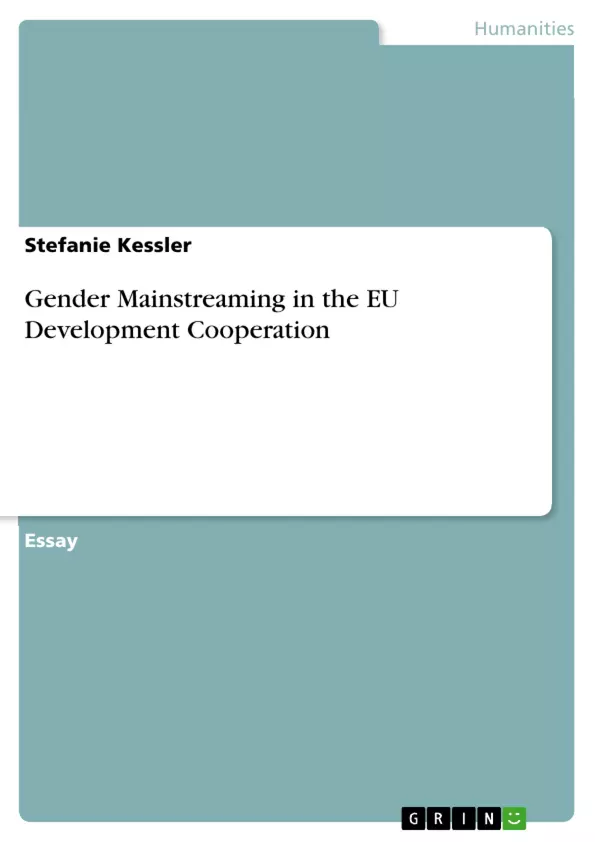The essay examines and scrutinizes the adoption and implementation of Gender
Mainstreaming in the development cooperation of the European Union (EU). It reviews the theoretical concept of Gender Mainstreaming linked to feminist theory in order to reflect upon the adaptation of Gender Mainstreaming within the EU. Herefrom seven criterias are deduced in order to analyse the adoption and implementation of Gender Mainstreaming in the EU development cooperation. Key issues are the political willigness of the EU towards gender equality, gender training of staff, internal assessment and evaluation, the two sidedness of Gender Mainstreaming, the representation of women in decision-making, gender analyses of the social contexts and the actual impact of Gender Mainstreaming. Concluding the essay identifies a key problem in the transfer of a gender
perspective in policies into practice and therefore into actual transformation of structures and gender hierarchies.
Inhaltsverzeichnis (Table of Contents)
- Introduction
- Concept of Gender Mainstreaming
- Analysis of Gender Mainstreaming in the development cooperation of European Union
- Conclusion
Zielsetzung und Themenschwerpunkte (Objectives and Key Themes)
This essay aims to examine the adoption and implementation of Gender Mainstreaming within the development cooperation of the European Union (EU). It delves into the theoretical concept of Gender Mainstreaming, linking it to feminist theory, to understand how it has been adapted within the EU. The essay explores the effectiveness of Gender Mainstreaming in achieving gender equality, examining its strengths and weaknesses in practice.
- The theoretical framework of Gender Mainstreaming and its connection to feminist theory.
- The challenges and successes of implementing Gender Mainstreaming in EU development cooperation.
- The impact of Gender Mainstreaming on decision-making processes and development strategies.
- The role of political will, gender training, and internal assessment in achieving gender equality.
- The challenges of bridging the gap between theoretical concepts and actual implementation of Gender Mainstreaming.
Zusammenfassung der Kapitel (Chapter Summaries)
The first chapter introduces the concept of Gender Mainstreaming and its potential as a transformative strategy for achieving gender equality in society. It discusses the origins of Gender Mainstreaming in the context of the United Nations conferences on women and its adoption by the European Union. The chapter also highlights the criticisms surrounding the effectiveness of Gender Mainstreaming and sets out the objective of analyzing its implementation in EU development cooperation.
The second chapter provides a detailed exploration of the concept of Gender Mainstreaming. It traces its development from the "Women in Development" (WID) to the "Gender and Development" (GAD) approach. This chapter discusses the underlying feminist critique of liberal democracy and the challenges inherent in integrating Gender Mainstreaming into existing political structures.
Schlüsselwörter (Keywords)
The primary keywords and focus topics of this text include: Gender Mainstreaming, Feminist Theory, EU Development Cooperation, Gender Equality, Political Will, Gender Training, Internal Assessment, Decision-making Processes, Implementation Challenges, and the Gap Between Theory and Practice.
- Quote paper
- Stefanie Kessler (Author), 2008, Gender Mainstreaming in the EU Development Cooperation, Munich, GRIN Verlag, https://www.hausarbeiten.de/document/116031


